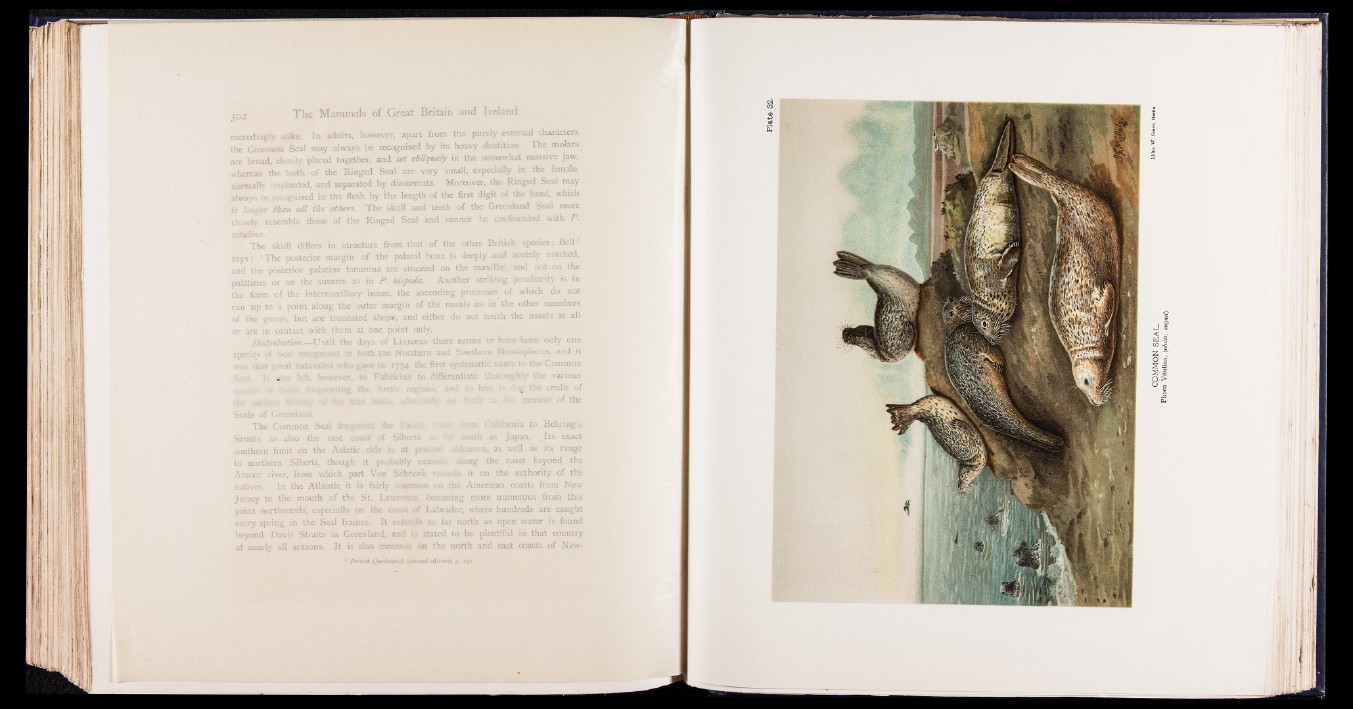
The Mammals 302 of Great Britain and Ireland
exceedingly alike. In adults, however, apart from the purely external characters
the Common Seal may always be recognised by its heavy dentition. The molars
are broad, closely placed together, and set obliquely in the somewhat massive jaw,
whereas the teeth of the Ringed Seal are very small, especially in the female,
normally implanted, and separated by diastemata. Moreover, the Ringed Seal may
always be recognised in the flesh by the length of the first digit of the hand, which
is longer than a ll the others. The skull and teeth of the Greenland Seal more
closely resemble those of the Ringed Seal and cannot be confounded with P.
vitulina.
The skull differs in structure from that of the other British species ; Bell1
says : ' The posterior margin of the palatal bone is deeply and acutely notched,
and the posterior palatine foramina are situated on the maxillæ, and not on the
palatines or on the sutures as in P hisjnda. Another striking peculiarity is in
the form of the intermaxillary bones, the ascending processes of which do not
run up to a point along the outer margin of the nasals as in the other members
of the genus, but are truncated aboyé, and either do not touch the nasals at all
or are in contact with them at one point only.
Distribution._Until the days of Linnaeus there seems to have been only one
species of Seal recognised in both the Northern and Southern Hemispheres, and it
w35 .T,at jyreat naturalist who gave in 1754 the first systematic name to the Common
. however, to Fabricius to differentiate thoroughly the various
reqaéatiög the Arctic regions, and to him is due the credit of
the .: jy-asücv <-:# thé. true Seals, admirably set, forth iw his memoir of the
Seals of Greenland.
The Common Seal frequents the Pscték < «ast 'oon* California to Behring s
Straits, as also the east , coast of Siberia a fa? south as Japan. Its exact
southern limit on the Asiatic side is at present 05 known, as well as its range
in northern Siberia, though it probably extends along the coast beyond the
Amoor river, from which part Von Schrenk records it on the authority of th’e
natives. In the Atlantic it is fairly common, on the American coasts from New
Jersey to the mouth of the St. Lawrence, becoming more numerous from this
point northwards, especially on the coast o f Labrador, where hundreds are caught
every spring in the Seal frames. It extends as far north as open water is found
beyond Davis Straits in Greenland, and is stated to be plentiful in that country
at nearly all seasons. It is also common o n the north and east coasts of New-
1 British Quadrupeds (Mcond edition), p. 241-